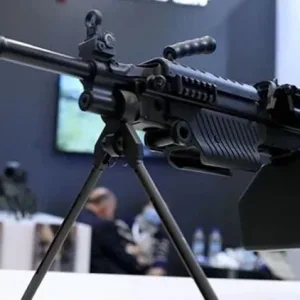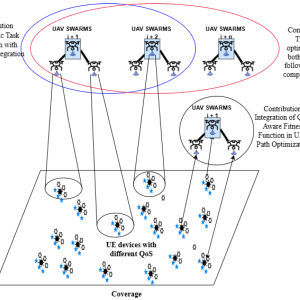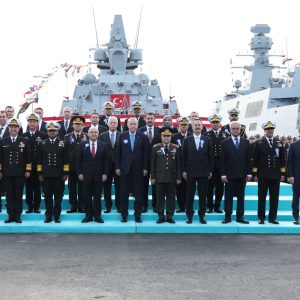The global landscape of modern warfare is witnessing a paradigm shift with the Future of Artillery Systems, redefining military operations with a focus on range, precision, and strategic deployment. The artillery market, currently valued at an estimated USD 11.8 billion, is projected to escalate to USD 16.0 billion by 2028, with a Compound Annual Growth Rate (CAGR) of 6.2%. This growth trajectory underscores the pivotal role of artillery in contemporary and future combat scenarios.

Modern Warfare: The Imperative of Advanced Artillery
The driving force behind the escalating demand for advanced artillery systems stems from their unparalleled capability to deliver long-range firepower with exceptional precision. This capability is not merely a tactical asset but a strategic necessity in the age of modern warfare. Artillery systems, renowned for discharging large-caliber projectiles over vast distances, now embody the nexus between traditional firepower and cutting-edge technology.
Artillery Systems: A Tactical Edge in Defense
Artillery’s value proposition lies in its ability to engage enemy fortifications, disrupt hostile advancements, and provide indispensable support to allied troops. The advanced artillery systems of today afford military units the strategic advantage of “beyond line of sight” engagements. This means they can neutralize targets that are not immediately visible, a feature that ensures the safety of personnel and maximizes operational efficacy.
Investing in Defense: A Global Priority
In a world marked by geopolitical tensions and surging conflicts, nations are strategically channeling resources into their artillery arsenal to safeguard national security and assert influence. Investment in these systems reflects a broader defense strategy encompassing:
- Enhanced Range and Precision: Military powers are in pursuit of artillery systems capable of striking targets across borders with pinpoint accuracy.
- Strengthening Alliances: Global alliances and partnerships are being forged to share technology and develop artillery capabilities collaboratively.
- Robust Defense Postures: Countries are acquiring state-of-the-art artillery to deter adversaries and protect territorial integrity.
- Multi-Domain Capabilities: There’s a concerted effort to integrate artillery with air defense, intelligence, and cyber capabilities to form comprehensive defense solutions.
- Deterrence and De-escalation: Artillery systems play a crucial role in maintaining a balance between showing military might and preventing conflict escalation.
The Logistics of Artillery Operations: A Complex Endeavor
Despite their strategic significance, artillery systems present challenges in maintenance and logistics, which include:
- High Costs and Budget Constraints: The upkeep of artillery units is a financial burden, often constrained by limited defense budgets.
- Operational Environment Challenges: The deployment of artillery in remote or hostile terrains introduces logistical complexities.
- Maintenance Expertise: Specialized maintenance skills are required for the intricate components of modern artillery systems.
- Supply Chain Dependencies: The effectiveness of artillery units is contingent upon a resilient supply chain for ammunition and spare parts.
- Regulatory Compliance: Strict adherence to safety and compliance regulations is non-negotiable for artillery operations.
The Dawn of Unmanned Artillery Systems
The evolution of artillery is now veering towards unmanned systems, heralding a new era of autonomous firepower. These unmanned systems offer rapid deployment, enhanced adaptability, and seamless integration with other autonomous platforms like drones, thus revolutionizing battlefield dynamics.
Navigating the Complexities of Procurement
Acquiring state-of-the-art artillery systems is fraught with procedural complexities, from defining technical specifications to adhering to stringent regulatory frameworks. The procurement process is often characterized by:
- Lengthy Decision-making: A multi-layered approval process that can delay acquisitions.
- Budgetary Constraints: Financial limitations that influence the procurement decisions.
- Regulatory Compliance: The need to comply with international arms agreements can complicate and prolong procurement cycles.
The Asia Pacific Market: A Crucible of Military Innovation
The Asia Pacific region is rapidly emerging as a pivotal player in the artillery systems market. Countries like China, Japan, and India are propelling market growth through significant investments in artillery modernization, underpinned by substantial military budgets and technological advancements.
Key Market Players and Recent Developments
The artillery market is driven by prominent defense corporations such as BAE Systems, Lockheed Martin, and Hanwha Group, which are engaged in intense research and development, as well as the production and distribution of advanced artillery systems. Recent milestones include:
- Lockheed Martin Corporation: Secured a USD 615 million contract for the production of High Mobility Artillery Rocket Systems (HIMARS).
- Rostec: Announced enhancements to its Pantsir S1 Air Defence systems, incorporating improved targeting capabilities.
- BAE Systems: Awarded a multi-billion dollar contract to supply munitions, reinforcing the UK’s artillery capabilities.
The National Summit on Artillery & Indirect Fires
In response to the advancements by near-peer adversaries in artillery technology, the National Summit on Artillery & Indirect Fires serves as a critical forum for discussing emerging threats, opportunities, and strategic developments in the domain.










